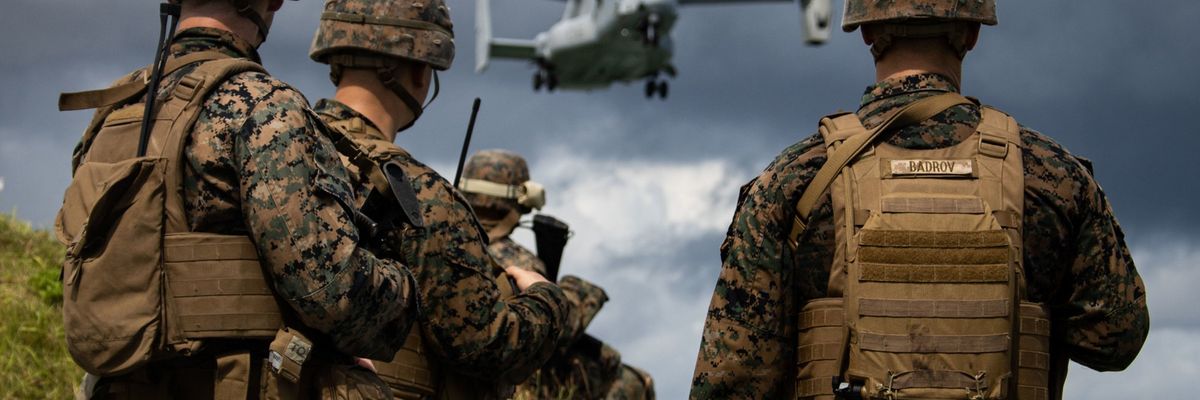The Pentagon has sent a U.S. Marine rapid response unit consisting of 2,000 Marines and sailors to the region "to send a message of deterrence to Iran and the Lebanese militant group Hezbollah" in the conflict in Israel-Gaza, according to reports early Tuesday morning.
According to CNN, the unit will join the two U.S. carrier groups in the Eastern Mediterranean. The U.S.S. Gerald Ford is already there; the U.S.S. Dwight Eisenhower left for the region this week. From CNN:
The 26th Marine Expeditionary Unit (MEU), which specializes in tasks such as amphibious operations, crisis response, humanitarian assistance, and certain special operations, had been stationed near Kuwait in recent weeks as part of a scheduled exercise there. But it departed early “as a result of emerging events,” Capt. Angelica White, a spokeswoman for the unit, told the Marine Corps Times on Wednesday.
This comes on the news Monday that a "defense force" of 2,000 individuals including "service members with a variety of capabilities and specialties, including providing medical support and handling explosives" has been "picked" and put on shortened pre-deployment status but was not going anywhere, yet. A Wall Street Journal report by Nancy Youssef had more detail:
"...the Pentagon decision signaled it is preparing to support Israeli troops should Israel launch a ground incursion into Gaza. It is unclear how many of those troops, should they be deployed, would go into Israel. But the officials said that at least some of them could enter the country to support Israeli forces. A predeployment order doesn’t mean the troops will certainly deploy but rather shortens the time troops need to be ready to move."
Reports say this handpicked defense force is separate from the rapid response unit sent to the region.
Meanwhile, the carrier groups can carry about 10,000 personnel between the two of them and bring significant firepower and strategic capabilities to bear. The U.S.S. Ford, aside from its fighter aircraft and missiles, sails with the Ticonderoga-class guided missile cruiser Normandy, and the Arleigh Burke class guided missile destroyers Hudner, Ramage, Carney, and Roosevelt. These ships carry surface-to-air, surface-to-surface, and anti-submarine warfare capabilities.
The U.S.S. Eisenhower carries fighter jets, helicopters and intel, surveillance and reconnaissance aircraft.
This story is developing
- Why does Egypt fear evacuating Gaza? ›
- Will US troops be drawn into the Israel-Gaza war? ›
- Tracking the US military build-up today in the Middle East - Responsible Statecraft ›














